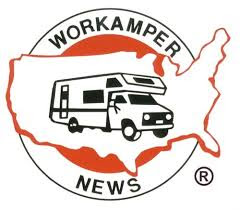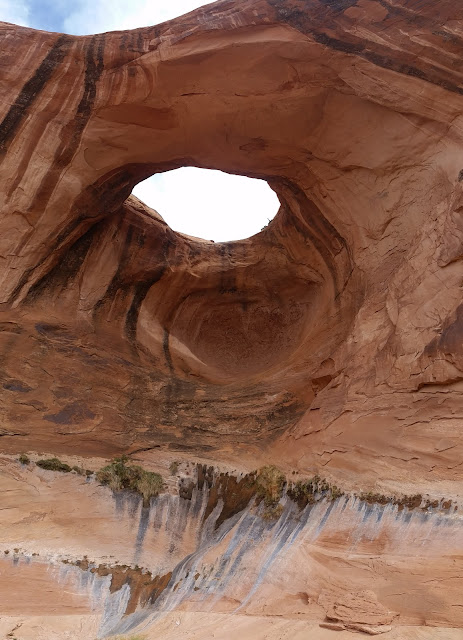After the debacle with
our jobs with an employer in Grand Teton National Park (see my post of May 3, 2018 What About an Employers Obligations? ), we wanted desperately to relax and
regroup within Wyoming. And we found the perfect boondocking
place to facilitate it--Lake Gelatt.
Lake Gelatt is the
smallest of several plains lakes outside of Laramie, Wyoming, where free camping/boondocking
is allowed for 5 nights. While Twin
Buttes Reservoir, Lake Hattie, and Lake Meeboer are also viable options
offering scenic views of the Snowy Range, we found Lake Gelatt served our needs
best, with easy access in and out. It
has limited camping areas, but it has one site that accommodates a big
rig setup like ours perfectly. It was quiet, serene, and virtually unpopulated during our stay. Lake Gelatt is within 2 miles of Twin Buttes, so we often hiked over there
to watch the wildlife in the nearby ranges and fields—water fowl (including some pelicans), cows,
donkeys, horses, pronghorn deer, and prairie dogs.
 |
The appropriately-named Snowy Range |
We did notice that the Twin Buttes’ Reservoir entry road
is like a washboard, and the pull off waterfront camping sites tended to be
either too soft, rocky, or pot-holed for our liking. Lake Hattie is lovely and encompasses a huge area. The roads leading in are all in decent shape (at
least they were during our stay), and there are camping areas adequately sized
for big rigs. It is a very popular
area among campers and fisherman alike (in other words, too many people for us--we enjoy solitude).
We drove through
Laramie, which is a typical mid-West city with a small town feel. It has a splatter of box stores, fitness
centers, and fast-food joints to accommodate the students of the University of
Wyoming. The historic downtown area is cool with its building murals,
western motifs, and a huge assortment of pubs and bars to entertain adults of
all ages.
 |
One of the wall murals in historic downtown Laramie |
We visited the Wyoming
Territorial Prison, known for being the Big House where the notorious Butch
Cassidy served his sentence. It is one
of only three federal territorial penitentiaries still in existence and the one with the
most original structures preserved. The grounds also include the Warden's House, an Old West town, and St. Mary's of the Plains Chapel. The Wyoming Territorial Prison is a real hidden gem! The $5/person admission is well worth it. Even better for us RVers, the Prison has a dump station
and potable water (turned on/off seasonally) for a user fee of only $10. We were lucky since they had just turned the water
on the day before we arrived.
 |
The Notorious Butch Cassidy, the Robin Hood of the West |
 |
The Warden's House |
 |
Yours truly testing out the prison accommodations. Does this outfit make me look fat? |
 |
St. Mary's of the Plains Chapel |
We enjoyed our time at
Lake Gelatt immensely. It was a perfect
antidote to taking away that bad taste left in our mouths from the Grand
Tetons.
We hit the road,
heading to South Dakota for our replacement new jobs working within Black Hills National Forest. I thought I’d mention just how my folks were able
to land new employment so quickly. We are
Gold Members of Workamper News, and Mom reads the email job alerts daily. Furthermore, when the printed magazine is
available, Mom reviews it. We also
subscribe to free job listings like Workers on Wheels, Coolworks.com, Escapees job
board, etc. From all these sources, Mom compiles (and updates weekly) a list of jobs that peak her interest for future
use. So all she did to find another job was refer to her
listing. Like I’ve said many times before, she is very
proactive and always has a Plan B (and sometimes, C!).
We worked within the Black Hills in 2015 and loved the area. We usually workcamp in a different place each year (there is no much new to see and do). But we have friends working in the area and others who live within the Hills, so we figured we would make an exception and return to Paha Sapa, as the Lakota Indians call the area.
We could not enter the
Forest until May 10, so we broke our 7 hour commute from Laramie into two driving days. We spent the night
outside of Hot Springs, SD at Cottonwood Springs Recreation Area, which has
boondocking sites available for $10/night.
Unfortunately, we arrived to find the camping area still “closed for the
season”. We parked outside the gate for
the day use area that is open all year, which must have been acceptable since the Sheriff did not approach/reprimand us as he drove by.
We arrived at gorgeous
Pactola Lake Campground within the Black Hills National Forest, our home for the next four months. It offers boating, fishing, swimming,
picnicking, hiking, and we have even seen some folks snorkeling. The Lake was created through the damming of
Rapid Creek in 1952, and provides the drinking water for the Rapid City
metropolitan area.
Speaking of drinking
water, there’s always lots of discussion about RV traveling with a full water
tank. Many folks say it is too much
added weight. However, we take the approach of planning for worst case
scenario. Therefore, we always fill our
water tank before hitting the road. After we filled up in Laramie, we used our tank water to shower/wash
dishes/brush teeth/flush toilets during our two-day commute to the Black Hills, and when we arrived
at the campground we found the water would not be available for use for two days! Good thing we are preppers and traveled with our 110-gallon freshwater tank full!
Dad got the “toys”
unloaded and assembled, and he set up our “backyard” while Mom (who is a bit OCD)
did yet another MAJOR cleaning, including washing windows, polishing furniture, cleaning out cupboards, reorganizing the fridge/freezer, hanging pictures, and putting up ceramics, etc.
We no sooner got settled than the rains started—and continued steadily for
a full week! Such is Spring weather in the Black Hills.
It was during Mom’s
most recent cleaning frenzy that we discovered we picked up a hitchhiker. Yep, Milton the Mouse was in the house! He must have come on board quite recently,
since Mom detected no droppings during her cleaning blitz of every nook and
cranny when we arrived in Wyoming and now again in South Dakota. Mom took her usual stance during an
altercation with any undesirable creature or insect—she screamed and jumped on
a chair. Dad, on the other hand, became
like a Ninja, displaying cat like quickness (unlike a certain house cat who does not think it necessary to earn her keep around here. Sure wish Tabby were more like my feline friend, Tazzy!) Dad was armed with a 1974
Louisville Slugger baseball bat, so poor Milton didn’t stand a chance. Seemingly, I am the only rodent this family tolerates.
 |
The demise of Milton the Mouse |
 |
One groggy-eyed Tabby, caught sleeping on the job! |
We had a family discussion recently about having an onboard washing machine/dryer. Is it cost effective? Is the convenience worth the added weight? Mom thought it was imperative to have one. So from Day 1 of our full-time RVing lifestyle, we had a Splendide unvented all-in-one unit. "Had" is the operative word in that last sentence. Right after the one-year warranty expired, it started to give us problems, and has consistently done so. Dad has performed major surgery on it several times. And although he was able to repair it in the past, a new challenge would always arise. The latest problem we encountered was a cracked drum. This was the second drum to go bad since we purchased the unit in 2012! Dad thinks the machine got used more than its design was intended. Mom hated the machine anyway, complaining that the clothes came out of the dryer too wrinkled (since it is unvented, it uses steam to dry). Fortunately, we all agreed it was no longer worth investing money to fix it. And it doesn't make sense to replace it since we don't use it 1/3 of the year when we boondock. Furthermore, many campgrounds (including Escapees and here at Pactola Lake) prohibit us from using it due to the strain on their septic systems. So good riddance Splendide, hello added storage space!
After settling in, we enjoyed meeting some of the
campground residents like white-tailed deer, osprey, wild turkeys, chipmunks,
and various avians like brown-headed cowbirds, robins, and red-winged
blackbirds. Pactola Lake is teeming with
the peskiest, dirtiest waterfowl known to man—Canadian geese. We had an epidemic of them in New
Jersey. They were very fond of all the
corporate campuses which featured water retention/detention
basins/fountains. They got so out of
control that a new industry was formed—Goose Busters! These companies would use border collies, dog
decoys, and strobe lights to deter the geese from over-staying their
welcome. It is said that if these
creatures nest in the same area for 3 seasons, they will no longer
migrate. I am convinced there is not one
goose left in Canada!
Friends Guy and Susan were only in South Dakota a short time, so we were glad we had a chance for them to stop in to visit with us at Pactola and for us to wish them well with their new Classy Chassis pick-up truck. Their little Yorkie, Lacilou, is simply adogable!
While my parents attended orientation and met their co-workers, I got acquainted with their canine kids, of which Ginger is my absolute favorite! What a great bunch. Me thinks we are destined for a terrific summer!
We would like to thank some amazing organizations for all they do for the RVing community:
Escapees RV Club

Xscapers

RVillage

RV Dreams

Escapees RV Club

Xscapers

RVillage

RV Dreams
Workamper News






























































































